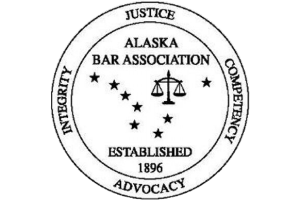Compound Fracture
Compound fractures or broken bones are serious injuries the often occur after a car accident, boating accident, or airplane crash. Some kinds of fractures are more dangerous than others: Compound fractures can require heavy medical care even if a patient doesn’t develop complications.
What is a Compound Fracture?
A compound fracture, also referred to as an open fracture, refers to the combination of a broken bone and a nearby open wound. In some cases, the bone broke through the patient’s skin. In others, a co-occurring trauma damaged the skin. These fractures are highly dangerous because infection is highly likely.
Doctors categorize compound fractures by the severity of the skin wound under three classes:
- Grade/Type I: The skin wound is clean and less than 1 cm long.
- Grade/Type II: The skin wound is more than 1 cm long. However, surrounding tissue is not torn or heavily damaged.
- Grade/Type III: The skin wound includes extensive tissue damage with damage to vessels and nerves. Alternately, the fracture is segmental. (The bone is broken in more than once place. This results in an unattached piece).
- Doctors further sub-categorize Type III fractures because the type of damage, and required treatments, still have wide variation.
- Type IIIa: Soft tissue still covers the highly damaged bone.
- Type IIIb: Bone is exposed and soft tissue is lost – including the periosteum (connective tissue covering the bones). Contamination risks are high for these wounds.
- Type IIIc: Extensively damaged blood vessels require urgent action to restore blood flow. Otherwise, the limb may be lost.
- Doctors further sub-categorize Type III fractures because the type of damage, and required treatments, still have wide variation.
Even mild compound fractures require extensive treatment and could result in dangerous complications. If you or someone you love has suffered a compound fracture due to an accident, our team can advise you on whether a lawsuit can help recover compensation for medical expenses.
Reach out online or call us at (907) 277-3090 to set up a consultation.
Compound Fractures Causes
Each year, 6 million fractures affect patients in the U.S. Around 250,000 of them are compound fractures. Though causes vary, most of these fractures result from high-energy collisions like:
- Vehicular accidents
- Industrial accidents
- Falls from height
- Gunshots
However, the accident itself doesn’t have to be catastrophic to cause these injuries: simple falls or sports collisions may also be to blame.
Symptoms
A sudden onset of pain typically accompanies broken bones. To identify a break from another type of injury, patients should look for the following symptoms:
- Difficulty moving the injured area
- Difficulty using nearby joints
- Injured limb cannot bear weight
- Swelling or warmth
- Bruises and/or redness
- Injured body part is an abnormal shape
Compound fractures may be easier to identify because the broken bone often protrudes through the skin. A broken bone near a skin laceration is treated as an open fracture. No matter the cause of the skin laceration. Skin wounds that are not close to the break can be treated separately.
Treating Compound Fractures
Seek medical help for a compound fracture as soon as possible. Bacteria may infect an open wounds. The first step a doctor will take is debridement—the removal of contamination and damaged tissue. They will then rinse the wound (“irrigate” it) with saline solution to ensure it is as clean as possible. Following the proper steps to protect against infection, doctors will stabilize the bone and may close the wound (if small). Open wounds require regular care and cleaning. Large wounds may not heal by themselves; surgeons may transfer skin and muscle tissue from other parts of the body to cover them.
Complications
Bacteria contaminates approximately 64% of compound fractures. This puts them at high risk for infection. The site of the injury, the wait time before treatment, the type of contaminant, and lifestyle factors all affect a patient’s likelihood of bacteria multiplying to a dangerous amount. Possible complications include:
- Cellulitis (infection of the skin) or Osteomyelitis (infection of the bone)
- Nonunion (failure of the break to heal)
- Kidney failure (resulting from muscle death and breakdown)
- Muscle and nerve damage (if compartment syndrome swelling creates pressure in muscles)
- Ischemia (blockage of blood flow to limbs) and amputation
Some complications fully resolve with medical treatment and attention. Others result in lasting damage or disability. You may be able to get help with your medical bills and other related expenses if you’ve suffered a compound fracture (with or without complications) due to an accident or another party’s negligence.
Call Johnson Law, P.C. to help you or a loved one was injured in a catastrophic accident. Recovering compensation from insurance or via a lawsuit isn’t easy—but we’re here to streamline the process. Our experienced team can take on the heavy lifting so you can focus on your recovery.
Do you have questions about a compound fracture lawsuit? Schedule a free consultation online or call (907) 277-3090 to speak to a lawyer today.







